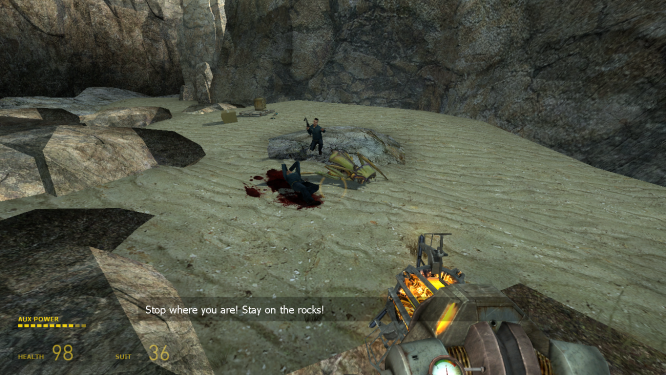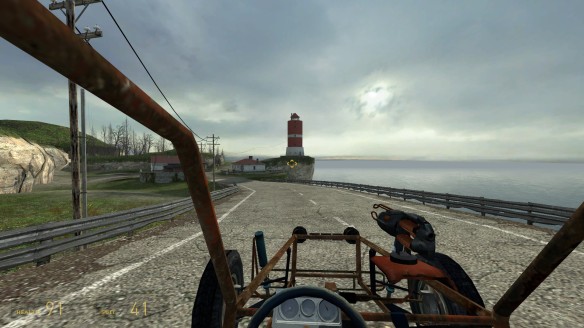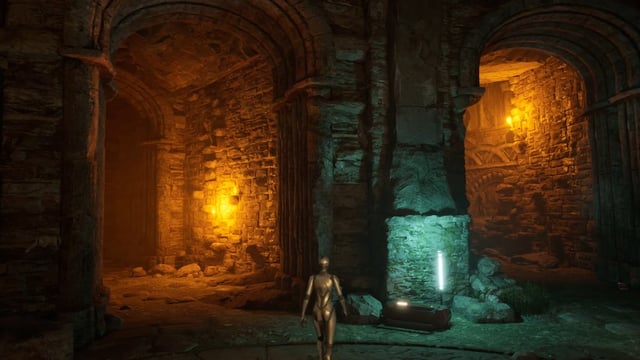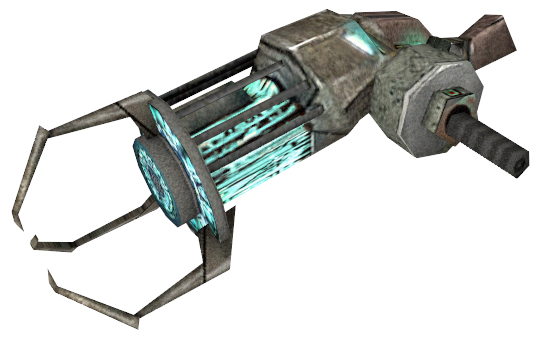Beyond Scripted Sequences: How Half-Life 2's Gravity Gun Mastered Emergent Gameplay As a game developer with over a decade under my belt, I’ve seen countless mechanics come and go.

As a game developer with over a decade under my belt, I’ve seen countless mechanics come and go. But few have left as indelible a mark as Half-Life 2's Gravity Gun. It wasn’t just a weapon; it was a key that unlocked a whole new dimension of player agency and emergent gameplay. While the game featured iconic scripted moments, the Gravity Gun pushed beyond those rails, allowing players to interact with the environment in ways the developers may not have even fully anticipated. Let’s delve into how Valve achieved this magic, exploring the physics, level design, and lasting impact of this groundbreaking tool.
The Foundation: Source Engine Physics
Half-Life 2 arrived at a time when physics in games was starting to become more than just window dressing. The Source engine, coupled with the Havok physics engine, provided a robust framework for simulating realistic interactions between objects. Key elements included:
- Object Weight and Density: Different materials had different properties, influencing how they behaved when manipulated. A wooden crate would float, while a metal one would sink.
- Collision Detection: The engine accurately tracked collisions between objects, characters, and the environment, ensuring that interactions felt believable.
- Force Application: The Gravity Gun allowed players to apply force to objects, influencing their movement and trajectory. The strength of this force was balanced to be powerful but controllable.
These core features, when combined, created a playground where players could experiment and discover unexpected solutions. The beauty lay not just in the technology, but in how it was seamlessly integrated into the gameplay.
Unleashing Creativity: Examples of Emergent Gameplay
The Gravity Gun’s potential truly shone when players began to find ways to circumvent the game's intended solutions. Here are a few examples of how players creatively broke the mold:
1. Bypassing the Antlion Guard in Nova Prospekt:
Nova Prospekt, with its claustrophobic corridors and oppressive atmosphere, is a challenging section. The intended path often involves a direct confrontation with Antlion Guards. However, savvy players quickly discovered that they could use the ubiquitous boxes and debris scattered around the environment to their advantage. By carefully stacking these objects, often under the oppressive red glare of emergency lights, they could create makeshift platforms to reach upper levels, completely bypassing the Antlion Guard encounters. This felt incredibly rewarding, a triumph of ingenuity over brute force. It transformed a tense combat encounter into a physics-based puzzle. Half-Life 2 Gravity Gun Mods enable even more creative solutions to bypassing difficult gameplay.
2. Improvised Bridges in Ravenholm:
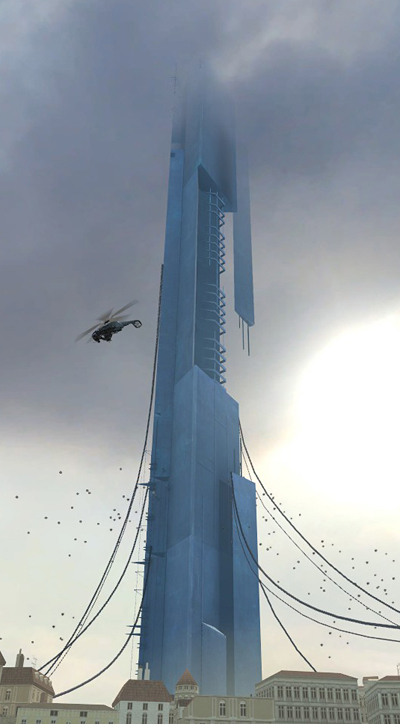
Ravenholm, the infamous zombie-infested town, presented players with numerous precarious gaps and platforms. While the level design encouraged creative traversal, the Gravity Gun opened up possibilities beyond the intended routes. Players began using explosive barrels – a common environmental hazard – to create makeshift bridges. The visual spectacle of this was unforgettable: the flickering light of burning barrels casting grotesque shadows in the zombie-filled darkness, the constant threat of the bridge collapsing, sending you plummeting into the horde below. It was a high-risk, high-reward strategy that perfectly embodied the emergent gameplay the Gravity Gun enabled.
3. Turning the Citadel Against the Stalker:
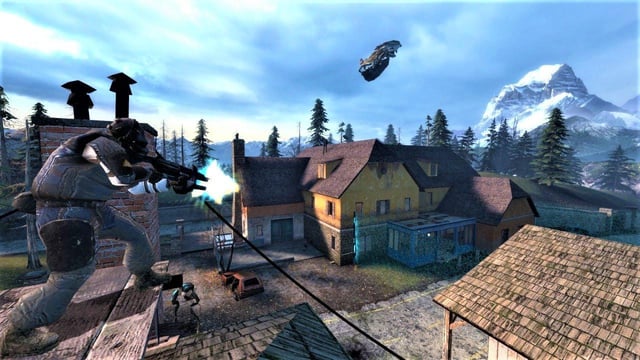
Even in the sterile, metallic environment of the Citadel Core, the Gravity Gun proved invaluable. The Stalkers, with their speed and agility, were formidable foes. However, players discovered that they could use the scattered debris – pipes, metal fragments, and other junk – to their advantage. By strategically positioning these objects with the Gravity Gun, they could create traps or simply hurl projectiles at the Stalker, turning the environment into a weapon. The oppressive silence of the Citadel, punctuated by the Stalker's chilling cries, amplified the tension and the satisfaction of outsmarting the enemy. Half-Life 2 physics engine tricks allowed players to dominate the game using this gameplay.
Level Design: Constraint or Inspiration?
The existence of the Gravity Gun undoubtedly influenced Half-Life 2's level design. Did it constrain the designers? Initially, perhaps. They had to account for the potential for players to bypass obstacles or break sequences. However, I believe it ultimately inspired more freedom.
- Sandtraps: This level features numerous environmental hazards that the Gravity Gun can manipulate. Players can use sand to suffocate Antlions or create defensive barriers. The open-ended nature of the level encourages experimentation.
- Highway 17: This section is filled with vehicles and debris, all ripe for manipulation. Players can use the Gravity Gun to clear roadblocks, create improvised cover, or even launch vehicles at enemies. The level's design embraces the chaotic potential of the Gravity Gun.
Rather than trying to completely control the player, Valve embraced the emergent gameplay, designing levels that offered multiple paths and solutions. They essentially created a sandbox within the framework of a linear narrative. Half-Life 2 Level Design Analysis shows this deliberate approach throughout the game.
A Lasting Legacy
The impact of Half-Life 2's Gravity Gun on game design is undeniable. It popularized the concept of physics-based manipulation and inspired countless other games. While not always a direct copy, the influence is clear:
- Dead Space: The Kinesis Module in Dead Space shares similarities with the Gravity Gun, allowing players to manipulate objects in the environment for combat and puzzle-solving. The gameplay in Dead Space utilizes the Havok Physics Game Design like Half-Life 2.
- BioShock: BioShock's Telekinesis plasmid allowed players to grab objects and hurl them at enemies, echoing the strategic combat of the Gravity Gun.
- Many Open-World Games: The increasing focus on interactive environments in modern open-world games, where players can manipulate objects and use them in creative ways, can be traced back, at least in part, to the groundwork laid by Half-Life 2.
The Gravity Gun wasn’t just a tool; it was a paradigm shift. It demonstrated the power of emergent gameplay and inspired a generation of developers to create more dynamic and interactive worlds. Even today, I find myself looking back at Half-Life 2 and marveling at the brilliance of its design. It's a masterclass in how to empower players and let them write their own stories within the game world. Emergent Storytelling is amplified by interactive gameplay and the creative application of player agency, making Half-Life 2 a lasting success.

